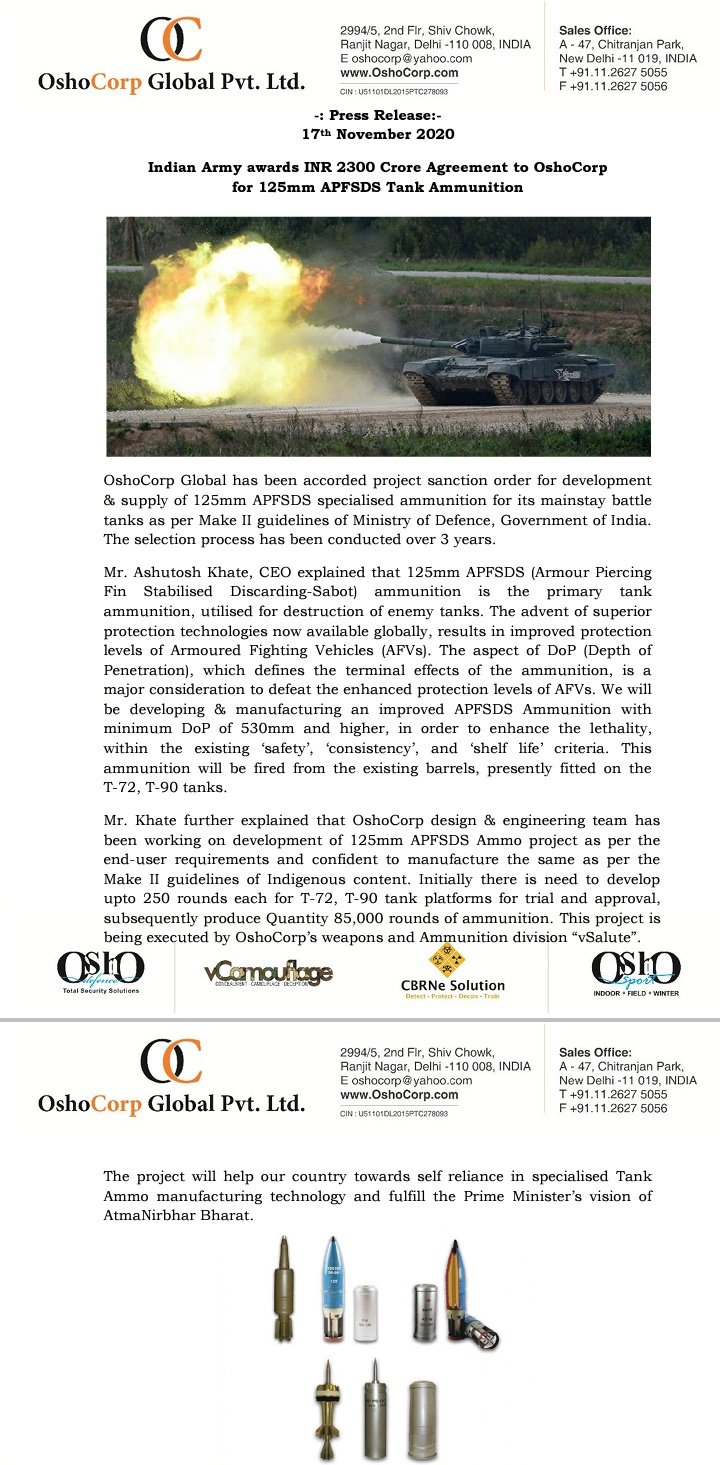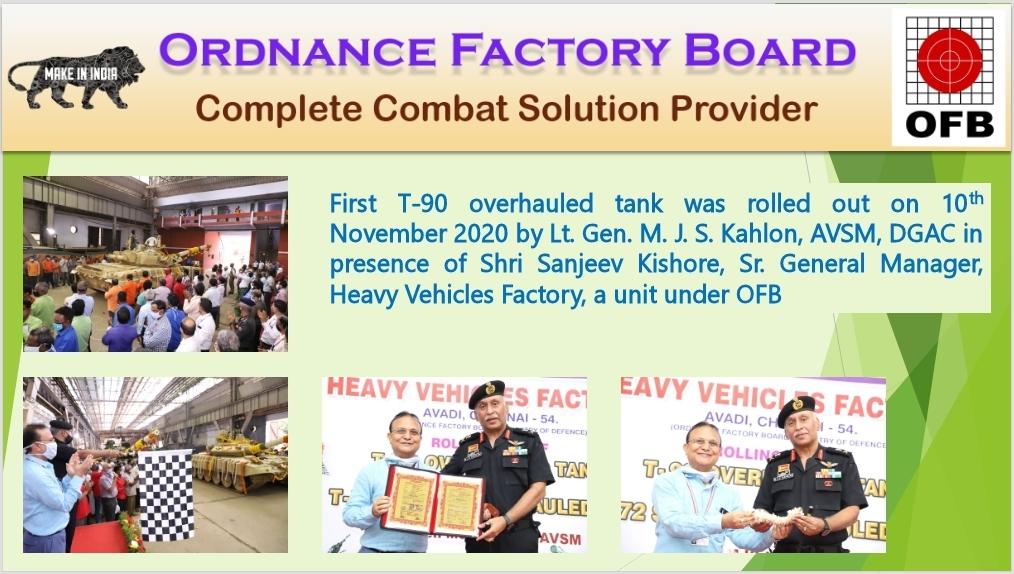- Joined
- Sep 13, 2020
- Messages
- 605
- Likes
- 1,032
FSAPDS MK 2 anything on projectile dimensions ?
Where'd you find it? OFB site may have some details.
DRDO site.No, where'd you find it? OFB site may have some details.
I think this is the 120mm.DRDO site.
Nothing that I can think of. L: D ratio appears to be barely 20:1, perhaps even less, or at least that's what it seems like from this angle.
It's 125mm one for T 72, T 90I think this is the 120mm.
Less L/D ratio is not a problem if impact velocity remain high. penetration will be Higher despite smaller length of projectile.Nothing that I can think of. L: D ratio appears to be barely 20:1, perhaps even less, or at least that's what it seems like from this angle.
Yeah, the problem is shorter stubbier projectiles tend to lose velocity at a more rapid rate compared to a longer thinner one, so the shorter rod might very well begin with a higher muzzle velocity but by the time they hit their targets, it will have been lost more of its ke. The same thing applies to small arms ammo as well.Less L/D ratio is not a problem if impact velocity remain high. penetration will be Higher despite smaller length of projectile.
But impact velocity can't be high without improvement in chamber pressure, ie better metallurgy.Less L/D ratio is not a problem if impact velocity remain high. penetration will be Higher despite smaller length of projectile.
A smaller rod would also ensure a reduced mass of the projectile, so you wouldn't need to pack as much propellant to attain higher initial muzzle velocity but the problem is, such a projectile would begin to lose the said velocity at a faster rate as well. So there is a downside to that as well.But impact velocity can't be high without improvement in chamber pressure, ie better metallurgy.
No can't reduce mass (ie, material density). That'll drastically reduce effective range.A smaller rod would also ensure a reduced mass of the projectile, so you wouldn't need to pack as much propellant to attain higher initial muzzle velocity but the problem is, such a projectile would begin to lose the said velocity at a faster rate as well. So there is a downside to that as well.
That's actually good work!.. Kudos.ok so i did some calculations estimating it's pen. I took 540mm length for main projectile.
With L/D ratio of 20:1 , diameter come to be around 27mm.
This tungsten alloy projectile let's say with a density of 18gm/cm3.... then will have a DOP of around 530 mm at 1.5km/s impact velocity and up to 580 mm at around 1.6 km/s impact velocity.
I took BHN value for target at 260 and NATO obliquity to 60°.
Not bad they made the projectile thick so that it doesn't disorients itself.ok so i did some calculations estimating it's pen. I took 540mm length for main projectile.
With L/D ratio of 20:1 , diameter come to be around 27mm.
This tungsten alloy projectile let's say with a density of 18gm/cm3.... then will have a DOP of around 530 mm at 1.5km/s impact velocity and up to 580 mm at around 1.6 km/s impact velocity.
I took BHN value for target at 260 and NATO obliquity to 60°.
Post the picture please , can't open the tweet.
Dude, seriously??!!No can't reduce mass (ie, material density). That'll drastically reduce effective range.
May be, it will definitely reduce the drag.Maybe a Sears-Haack shaped penetrator would be better.
Yes. If volume is unchanged (same length rod) then only way to reduce nass would be density reduction... And then it'll decelerate faster from air-drag bleeding kinetic energy faster.Dude, seriously??!!







| Thread starter | Similar threads | Forum | Replies | Date |
|---|---|---|---|---|
| E | The Indian Army and paranormal activities, UFO and the Yeti! | Indian Army | 5 | |
| W | Indian army should buy Galil ACE 7. 62 x 51 mm assault rifle | Indian Army | 4 | |
| W | New 7. 62 x 51 mm assault rifle coming into Indian army service | Indian Army | 0 | |
| W | 500 armed robots to Indian army | Indian Army | 0 |
